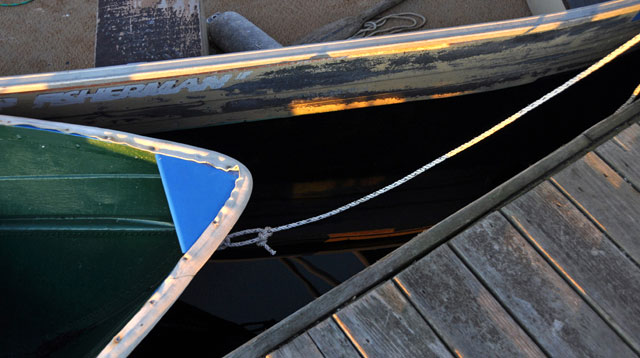
© 2011 Marty Layne. All Rights Reserved.
The diagonal appearance of the dock with its rectangle planks, compliment the strong triangle shape of the boats. The brilliant blue triangle in the bow and the rope complete the image.
Readers of www.apogeephoto.com are aware that I am an instructor of online classes. As most teachers know or soon discover, we are not only the teachers, but we become the students as well. We learn a great deal from our students through our interaction with them.
Sometimes, the simplest of questions become a wonderful teaching tool. This was the case in one of my Elements of Design class on Shape and Form. Let’s eavesdrop on a few discussions so you too can learn and explore your own thoughts around the topics.
Topic: Finding Shapes in Photo Subjects
Mike: Try as I might, I’m having a hard time getting my arms around “shapes”.
Phyllis: My first thought was that I don’t have interesting shapes, colors and forms in my environment but I know what Noella will say… “They are out there, I just have to look for and “see” them.”
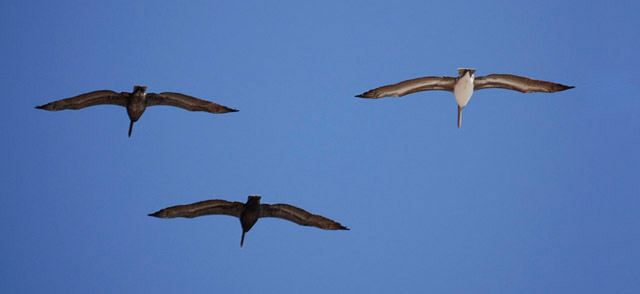
© 2011 Phyllis Peterson. All Rights Reserved.
Phyllis may not have known it when she made this photo, but there are certainly shapes here. The birds flying make an overall strong triangular shape, along with the triangles created by each bird–wing tips to beaks. Once you begin to break down your images into elements of design, it is much easier to understand composition and create compelling photographs.
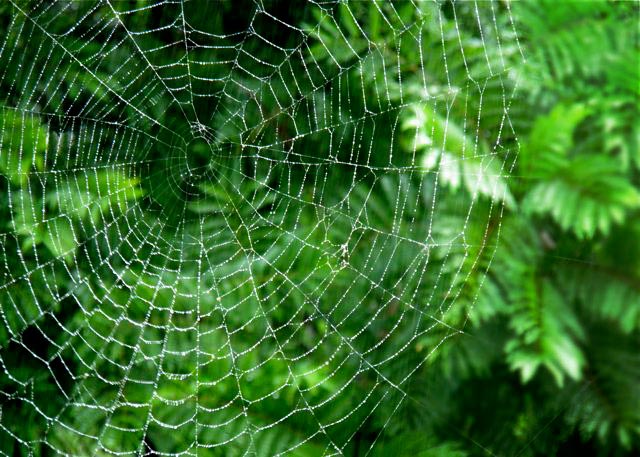
© 2011 Michelle Ricketts. All Rights Reserved.
Michelle captured natures shapes nicely here. Spiders create magnificent works of art as they spin their webs. Notice how the overall shape of the web is circular, but coming from the center are subtle triangles and those are then divided into rectangles.
Noella: Changing the way you think about images can be difficult. In fact this is probably one of the most difficult lessons we have to learn. The idea of looking at shapes is to have a tool that will help us see past all of the “little stuff” and get right to the essence of the image.
First you need to define your subject and its shape. And then use the other shapes to contribute to making that subject very clear and very important. Everything must contribute and not distract or pull your eye away from the subject.
Marla: I decided to set my sights on looking for triangles, squares, circles, etc. as opposed to the subject alone, so that is where I focused my brain. Once I reset my focus, it really helped me to change how I looked at the subjects.
I think that if you decide that you are going to look for shapes you will find them. If it’s easier, start with just one shape and tell yourself, “Today I am looking for subjects that make a circle.” Since that’s what you have placed in your mind, your “eyes” are going to see circles everywhere.
Noella: That’s a terrific way to say it and being able to zero in on what you want to see really helps you to find those shapes.
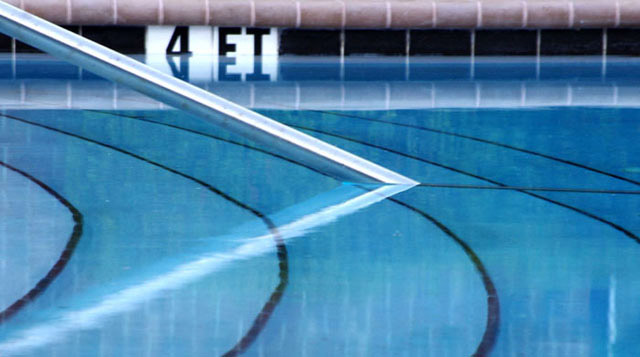
© 2011 Marla Meier. All Rights Reserved.
“A Guide to Getting Yourself into Deep Water”
This is an excellent example of where a collection of shapes can be the focus of the image. A strong triangle and continuing circles move the eye across the photograph. The tile, coping and reflections add even more dimension to the image.
Mike’s follow up question was of critical importance here, along with his posting of a really nice sunset photo.
Mike: I would like your thoughts on this photo with regard to the shapes. There are obvious shapes in the trees, but I see triangles in the tree clusters, in the lake, in the sky, and in the cloud formations. I am wondering if the shapes I am referring to here are relevant in the landscape sense?
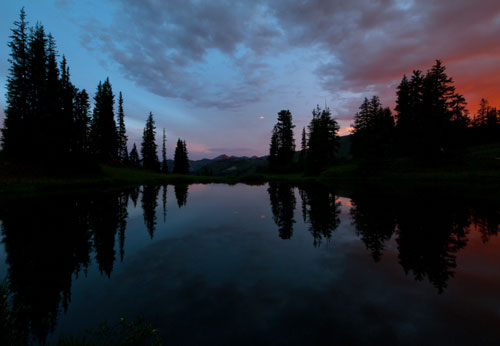
© 2011 Mike Denson. All Rights Reserved.
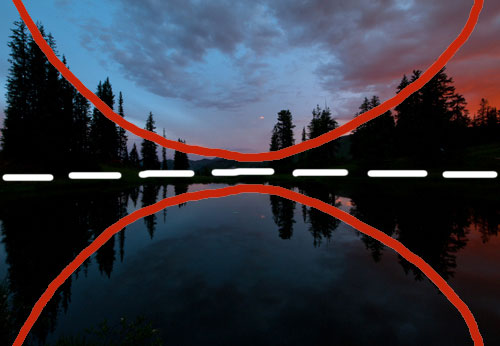
Noella: Breaking the total image space into shapes is what has the greatest impact in your sunset photograph. Many smaller units, when combined, create larger shapes. Look at the forest… it is made up of little trees. The trees are important because without them there would be no forest. But the forest is the whole and each tree is a part of the whole. By comparison, if there was only one tree then the tree is the whole and there would be no forest.
I’m going to turn to drawing the shapes and spaces to help you understand the composition. There is a half circle shape of the sky and a half circle shape of the sky reflection in the lake.
When you draw it, you discover that the side shapes are strong triangles that point to the center of the image. These combined shapes make it almost impossible to tear your eye away from this beautiful image.
Then Mike followed up with another question.
Mike: Is there something the shapes are supposed to be doing?
Noella: There are many building blocks that you will learn to use as you design an image. Shapes are just one of these elements and therefore it is difficult to say that they are actually “doing something.” By learning to see and work with the all of the building blocks of design, you change the image into something stronger — you give it purpose and impact.
Mike: So would you say that a snapphoto can often be improved by simply rearranging the building blocks (one set of which is shapes) to bring emphasis to the subject? If so, should it always be the subject that is emphasized and can we have multiple subjects?
Noella: That is just a super question, Mike. Yes, if there is a clear subject in the snapphoto, then the image can sometimes be improved by eliminating some of distractions. If there isn’t a clear subject, then it is more difficult to find and make something into the subject in order to produce a strong image.
Multiple subjects are possible (as in pattern photos) but even then, there is usually one thing that is more important than the other. Something that dominates the image becomes by default the subject. The other “subjects” then become subservient to the dominant one and, in turn, act as supports for the primary subject.
Here is an example of multiple shapes within an image. Let’s take an image of two hands—one hand with a flower in it and the other reaching out to accept the flower. Both are the same size. What is the subject? Would it be the giving hand or the receiving hand? Are they equal? To my mind, the giving hand would be the subject here for two reasons:
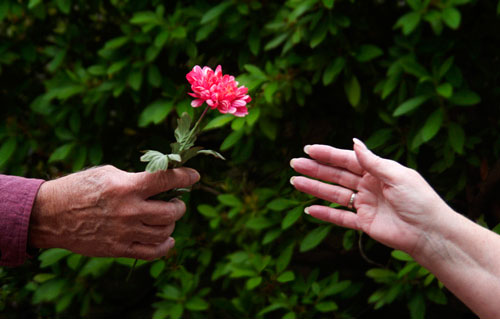
© 2011 Noella Ballenger. All Rights Reserved.
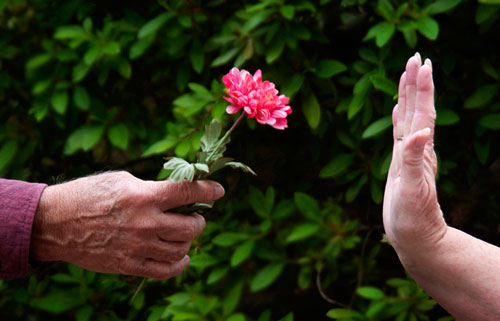
1. The time frame implied that the hand with the flower was extended first.
2. The hand with the flower is more important because it holds the flower.
Can you take that circumstance and make the giving hand less important than the receiving hand? How about if the receiving hand was refusing the gift? Has the status of the subject shifted in the image? The refusing hand now holds the weight and balance of power because of the forceful gesture.
Now think about the shapes involved and their position? In the first example, flower given and accepted, we basically have two oval shapes, similar in size, and they are both horizontal and both equal in energy. In the second example, we have a horizontal oval with a vertical oval. The vertical oval has the stronger energy and therefore becomes the subject.
Marla: That’s a great way to determine the prominence of a subject when there are multiple items within the frame and it also takes on a new perspective while photographing.
So, “seeing” a subject and deciding how to portray that subject to the viewer takes on a whole new meaning too. What a fun concept to ponder.
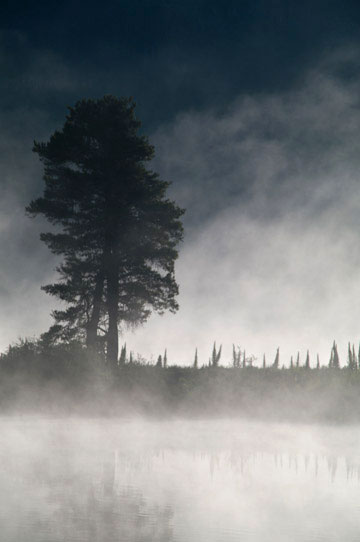
© 2011 Mike Denson. All rights reserved.
This lone tree in the fog is an example of uncomplicated shapes. The tree is an oval (1), and there are two rectangles (3 & 4) and one large square (2). Using simple drawings to outline composition basics can be a major help in learning to see.
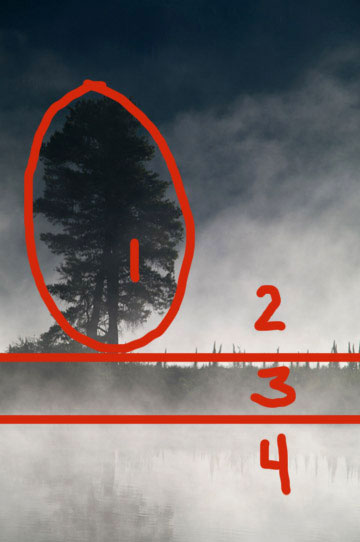
THE HUNT IS ON …
So the class was on a treasure hunt to find shapes and use them effectively to compose strong images.
Marty: I would like to be able to ‘see’ shapes and how they work in an entire frame. It’s hard for my eyes to see these but I will keep at it. My tendency is to see one shape vs. the whole frame as a series of interacting shapes.
Noella: Marty, to help you see more clearly and to simplify your images, let’s use Mike’s photo of a tree in the early morning. This is what I do when I am working on an image that just isn’t quite coming together – – I begin to draw.
These simple drawings have just 3-4 lines maximum. We only want to sketch the major subject-space divisions. I do it when I am working in the field as well as when I review my images. It’s a great tool for keeping your eyes sharp and helping you to make strong images with visual impact.
In Mike’s photo we have 4 shapes. Oval=tree; square=sky; lake and bank= 2 rectangles and as we look at that photo, we can definitely define what will make the image simple and yet very strong.
Marty: I really have to say that your drawing exercise drove the concept home. I had not seen Mike’s photo that way. I feel like I only see objects and then struggle to compose them pleasingly to my eye when I’m photographing. The ability to see shapes instead would really expand my vision – I will practice!
Mike: Noella, are you considering the entire sky rectangle as the defined shape, or just a portion of it, like the darker part? In other words, do you see the tree as a shape in a layer on top of the relatively square shape of the sky, or is the sky a shape that wraps around the tree shape? Hope this question makes sense.
Noella: Mike, in my eyes I was seeing the sky as a large rectangle with the oval silhouetted tree “pasted” on top of the rectangle. However, that is only the way I saw it. Everything can be broken down further or not depending on your point of view.
The island is a dividing line, but lines can create shapes. Whether we call it a shape or a line is not as important as seeing the scene as something other than a lake, a tree, and the sky. When you make this translation in your mind, you clarify what the scene is and because you do this, you can more easily simplify the design until it becomes a dynamic image!
Mike: I do see what you are saying. I really think the things that I have learned in the past few years makes me look at everyday differently, whether I have a camera or not.
Marla: That was a good discussion and it will make me see more expansive images in a new way–thanks.
Noella: My goal is to help you get the design factors so embedded in your mind that you can almost, without conscious thought, simplify, change and create your image with flare and impact.
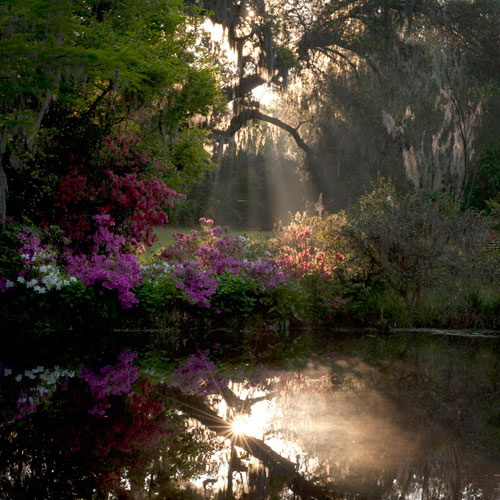
© 2011 Phyllis Peterson. All Rights Reserved.
Here is another example for you. While it can be a little difficult to see for those just learning about the element of shape, clear shapes appear in this photography with a lot of intricate details.
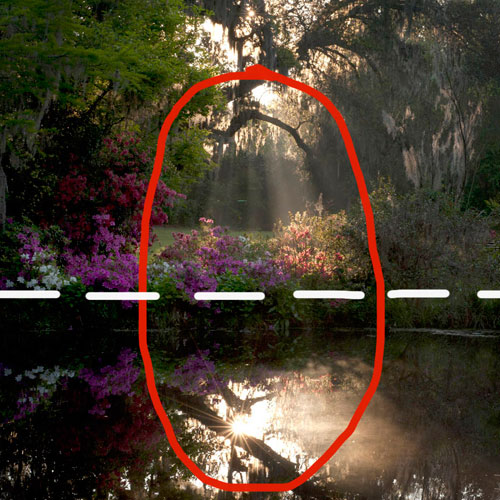
© 2011 Phyllis Peterson. All Rights Reserved.
The oblong line of these gorgeous flowers spits an oval that was created by the arch of the tree and its opposing reflection. Frequently it is just the little subtle details that can make a huge difference.
We have had some stimulating discussions in the class room. Working with and understanding the effects that shape and form has in your images is important toward moving forward with your personal photographic endeavors.
The very best art and photography that I have ever studied shows me that these artists are sound designers of their work. They know and understand how to see within the chaos of vistas what will make a memorable image. They know the basics of good composition.
The students in this class worked very hard toward that goal and in a few short weeks their images have taken a major step forward. Let me share with you how they are all now “seeing” with a new perspective and how far they have come.
We hope our discussions will help you “see” better too.
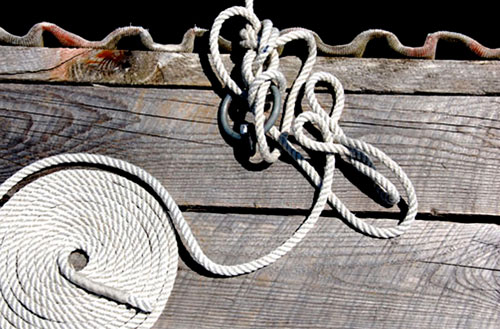
© 2011 Marty Layne. All Rights Reserved.
Coiled Rope by Marty Layne
This rope is a wonderful example of many circles and freelance shapes. It comes into the frame and carries you across the image. The rectangles of the planks on the wood dock act as a strong base for the order and the disorder of the rope.
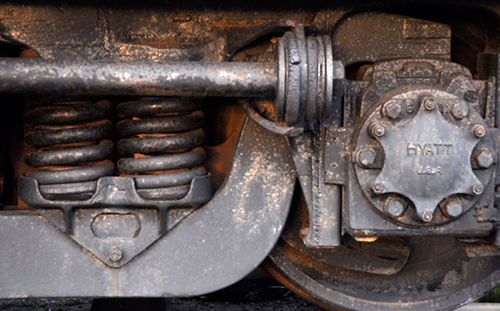
© 2011 Marty Layne. All Rights Reserved.
Train Wheel by Marty Layne
There are numerous shapes in industrial products and sometimes it is as simple as selecting the right crop to make the image work well. See how many shapes you can identify in this photo.
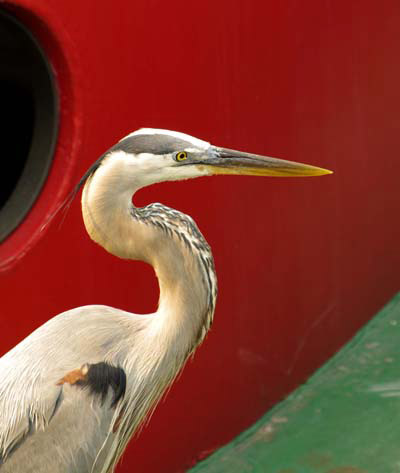
© 2011 Marla Meier. All Rights Reserved.
Great Blue Heron by Marla Meier
Flowing out of the frame, the neck of the bird with its “s” shape stands out against a strong background of color and circular shapes. When photographing, always be aware of your backgrounds because they can add so much to the image.
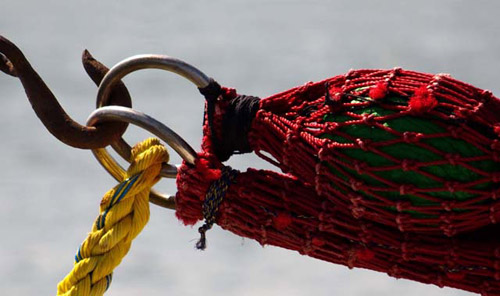
© 2011 Marla Meier. All Rights Reserved.
Hook, Line and… by Marla Meier
Ovals and circles can be exciting forms. The colors in this image emphasize the rectangle shape of the rope, the oval shape of the net and the circlular shape of the hook and rings. The frame of the image pulls these items taut.
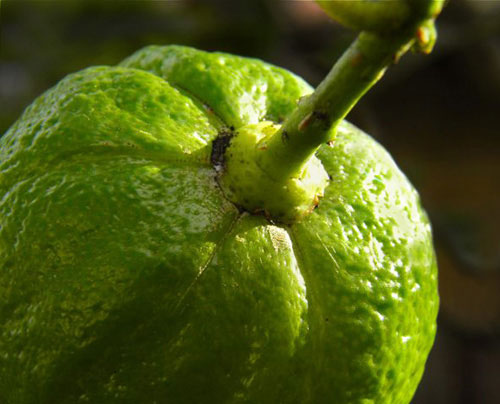
© 2011 Michelle Ricketts. All Rights Reserved.
Lemon by Michelle Ricketts
Circle within a circle is the shape of this lemon. The photograph of the stem end of the lemon is, along with its shadow, set on a diagonal which effectively divides the total space into two implied triangles.
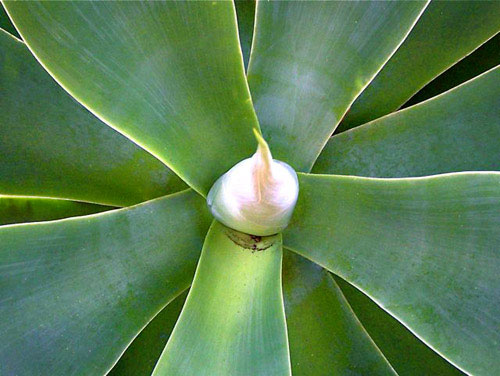
© 2011 Michelle Ricketts. All Rights Reserved.
Hold It Together by Michelle Ricketts
There is an implied out-of-the-frame circle made up of triangles that are drawn and held together by its center. This a great example of seen and unseen shapes.

© 2011 Mike Denson. All Rights Reserved.
Iris by Mike Denson
Shapes can replicate other forms. This very lovely close-up of an iris reminded me of a fountain as the petals rise from the stem and base. The symmetry and the colors of this flower adds to its quality.
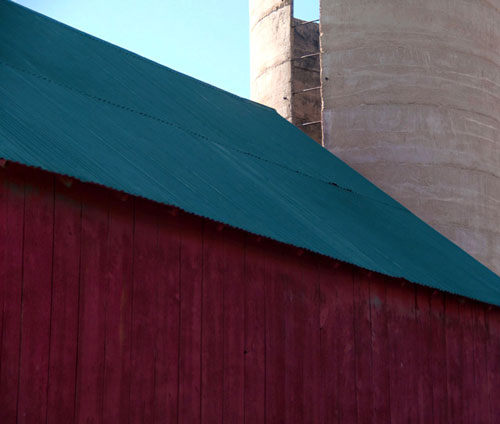
© 2011 Mike Denson. All Rights Reserved.
Barn and Silo by Mike Denson
As in most architecture, you discover more defined shapes. Here we see a variety of circles, squares and rectangles. This is a first-rate example of making shapes work together to create a simple but dynamic image.
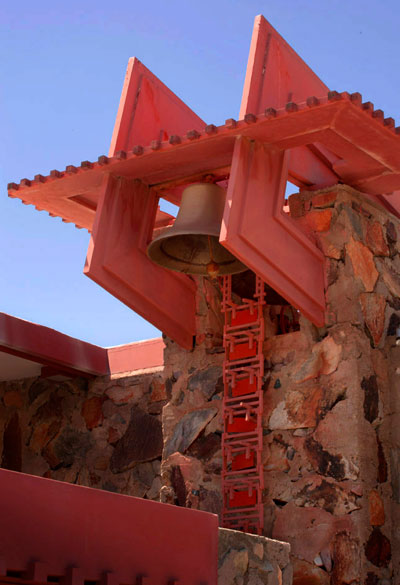
© 2011 Phyllis Peterson. All Rights Reserved.
Bell Tower by Phyllis Peterson
Here the architect has created a masterful assortment of rectangles and squares, which can make playing with shapes a fun photo experience. Learning to crop effectively emphasizes the shapes.
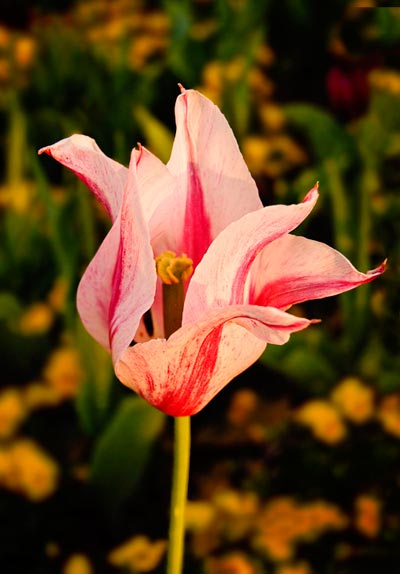
© 2011 Phyllis Peterson. All Rights Reserved.
Tulip by Phyllis Peterson
There are many examples of shapes in nature. Being able to isolate the essence of the shape and capture that photographically is part of helping your viewer see what you see. In this tulip the overall shape is broken into triangular sections which flow from the center circle.
The question is not what you look at, but what you see. – HENRY D. THOREAU
by Noella Ballenger
All text: © Noella Ballenger. All Rights Reserved.

Leave a Reply